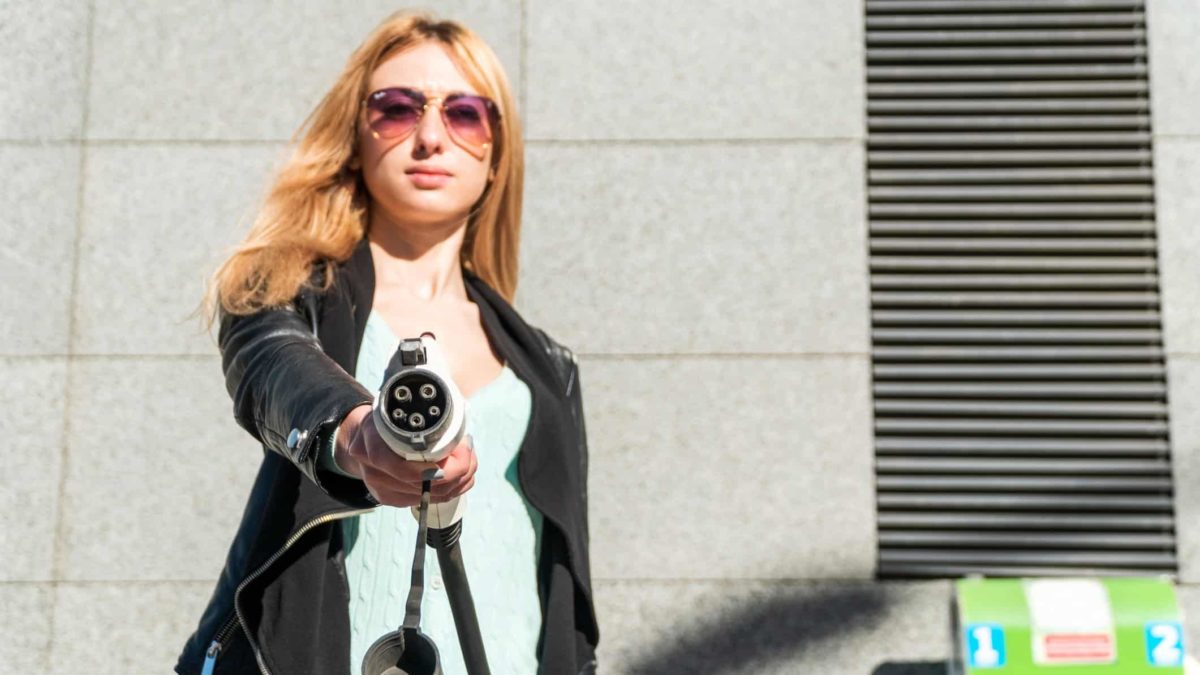This article was originally published on Fool.com. All figures quoted in US dollars unless otherwise stated.
Cathie Wood is the head of Ark Investment Management, which operates several exchange-traded funds (ETFs) focused on innovative technology companies. Tesla (NASDAQ: TSLA) stock is one of the top positions across Ark's portfolios, and Wood calls it the biggest artificial intelligence (AI) opportunity in the world thanks to the company's full self-driving (FSD) software.
Tesla currently generates around 79% of its revenue by selling passenger electric vehicles (EVs), but Ark released a set of financial models earlier this year that suggest that number is about to shrink significantly.
In fact, by 2029, Ark predicts a whopping 86% of Tesla's earnings will come from something else entirely.
Tesla's passenger EV business is struggling at the moment
When Tesla stock came public in 2010, few analysts believed the company would succeed in mass-producing EVs. It certainly proved them wrong, and it delivered a record 1.8 million units in 2023 alone. However, sales are clearly slowing.
Tesla delivered 1.29 million EVs in the first three quarters of 2024, which represented a drop of 2.3% compared to the same period last year. That means its annual deliveries are on track to shrink for the first time since it launched the flagship Model S in 2011 -- even though the company has drastically slashed prices over the past year to boost demand.
Demand is softening across the EV industry right now as consumers opt for cheaper gas-powered cars amid tough economic conditions headlined by high interest rates. Plus, a report by Goldman Sachs suggests consumers are concerned about a lack of rapid charging infrastructure, as well as the declining resale value of EVs in general.
But Tesla also faces a growing competitive threat, with low-cost manufacturers like China-based BYD threatening to flood global markets with cheap EVs. BYD's Seagull sells for under $10,000 in China, and it could be on its way to Europe in 2025. Those are important geographic markets for Tesla, and none of its passenger EVs can compete at that price point.
Tesla CEO Elon Musk outlined plans to build a low-cost EV, which was expected to go into production in 2025 and sell for $25,000, but during his conference call with investors for the third quarter of 2024 (ended Sept. 30), he said the project is no longer going ahead.
FSD and robotaxis are the way forward, according to Musk
Musk says building a low-cost passenger EV is "pointless" because Tesla's future is in autonomous vehicles instead. The company unveiled the Cybercab earlier this month, which is a self-driving robotaxi with no steering wheel or pedals.
The Cybercab will run on Tesla's FSD software, which the company has been developing for years. However, it does not have approval for unsupervised use in the U.S. yet, and a human driver must be ready to take over at all times. But based on the data collected from extensive beta testing in its passenger EVs, it is possible that the Cybercab is already safer than the average car on the road.
According to Tesla's most recent quarterly vehicle safety report, FSD caused one crash every 7 million miles, compared to one crash every 700,000 miles for the average U.S. driver. In other words, FSD is 10 times safer than human-driven vehicles, statistically speaking, as it stands today.
The software will only get better over time because the AI models upon which it is based are constantly learning from new data. Tesla is currently building a cluster of 50,000 graphics processing chips (GPUs) from Nvidia to train FSD further. In fact, the company is on track to spend $11 billion on AI data center infrastructure this year for that very purpose.
As a result, Musk expects the software to eventually receive regulatory approval for unsupervised use. He says it could be available in Texas next year, and potentially California.
FSD could transform Tesla's economics
Tesla expects to monetise FSD in three primary ways:
- Selling the software to owners of Tesla's passenger EVs.
- Licensing the software to other car manufacturers for a fee.
- Through a ride-hailing network Tesla built in-house, which will allow Cybercabs to transport passengers at all hours of the day (like Uber, except completely driverless).
Owners of Tesla's passenger EVs will also be able to lend their FSD-enabled cars to the network to earn extra income, which will be split with the company. Plus, the Cybercab will be available for purchase for an expected price of $30,000, so practically anybody can buy a fleet and set up their own driverless ride-hailing network.
All of those revenue sources could carry high profit margins. Software companies, for example, often have a gross profit margin of 80% or more, which is far higher than Tesla's current gross margin of 19.8% across its portfolio of hardware businesses today.
Plus, Uber paid its drivers a whopping $17.9 billion in the last quarter alone, which was its largest expense by far. That's an indication of how much money Tesla could save with an autonomous ride-hailing network operating at scale.
Ark's financial models suggest Tesla will generate $1.2 trillion in annual revenue by 2029, with FSD and Cybercab accounting for 63%. However, thanks to those high profit margins, Ark believes those products will account for 86% of a forecast $440 billion in earnings before interest, tax, depreciation, and amortisation (EBITDA).
Ark's forecast might be ambitious, and Tesla stock isn't cheap right now
Wall Street's consensus estimate (according to Yahoo) suggests Tesla is on track to generate $99 billion in total revenue in 2024. That means it will have to grow twelvefold by 2029 -- or by a compound annual rate of 64.7% for the next five years -- to meet Ark's forecast.
FSD and the Cybercab will have to scale up rapidly for Tesla to grow at that pace, because $99 billion in revenue this year would represent growth of just 2% compared to 2023. In 2025, Wall Street expects revenue to grow by just 15%. Simply put, passenger EV sales alone won't get the job done.
Plus, investors have to pay a hefty price to bet on Tesla's autonomous future, because its stock currently trades at a steep premium to the broader market. Based on its trailing-12-month earnings per share of $3.65, its stock currently sits at a price to earnings (P/E) ratio of 68.5. That's more than double the 32.1 P/E of the Nasdaq-100 technology index.
Tesla's future is incredibly exciting, but according to Musk's own forecast, the Cybercab won't go into mass production until 2026. That means the company's fate will rest on passenger EV sales for at least the next year. While Musk thinks they could grow by as much as 30% in 2025, I have doubts, considering the low-cost model is no longer going ahead, which leaves the brand susceptible to competitors like BYD.
In summary, Ark might be right about FSD and the Cybercab eventually, but its 2029 target is ambitious. Therefore, it might be best to wait until we receive more information next year before buying Tesla stock. Alternatively, if there is a pullback that brings its P/E ratio in line with the Nasdaq-100, that might be a good opportunity to take a long-term position.
This article was originally published on Fool.com. All figures quoted in US dollars unless otherwise stated.









